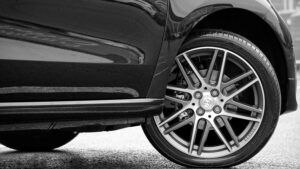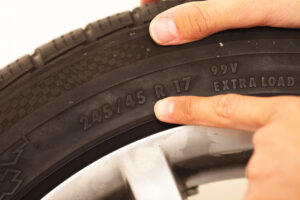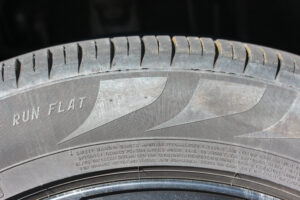Understanding Tyre Tread Patterns
The tread of your tyre is the part that actually makes contact with the road. Thus, it’s vital that when you are searching for new tyres, you’re looking into tread patterns to suit your driving type. Below we have compiled some of the most popular types of treads that can be purchased today.
Types of Treads
- Symmetrical Tread – delivers smooth driving, high directional stability and low rolling resistance.
- Directional Tread – great for providing protection against aquaplaning, excellent handling on snow and mud. It also offers good road-holding at high speeds.
- Asymmetric Tread – offers excellent handling, high curve stability, and superb grip in wet conditions.
Different Parts to a Tyres Tread
- Ribs – are the raised sections of a tread pattern, made up of tread blocks.
- Grooves – are the deep channels that run all the way around the tyre.
- Tread Blocks – are the raised rubber segments that actually make contact with the road.
- Sipes – small, thin slots that are moulded into the tread blocks.
All the parts of the tread mentioned above can be amalgamated to create a unique pattern to improve tyre performance. This includes enhancing low road-noise, greater handling, traction and wear.
Symmetrical Tread
The symmetrical tread pattern is the most common out of the three and can be found on passenger cars. Tyres that offer this design feature continuous ribs or tread blocks across the entire face of the tread. Both halves of the tyre will feature the same pattern.
Key Features:
- Smooth driving
- High directional stability
- Low rolling resistance
Drivers with the symmetrical tread pattern are given the most flexibility for tyre rotation without affecting day-to-day performance. These tyres are also quiet, long-lasting and fuel-efficient. However, they don’t adapt as well as other tyres when the weather changes and therefore, may not be as effective in terms of wet grip performance.
Directional Tread
Tyres designed with a directional tread pattern are created to roll forward in one direction only. These offer lateral grooves that meet in the middle of the tread and are shaped like arrows. The v-shaped grooves are more likely to resist aquaplaning at high speeds and evacuation of water. Another benefit of these tyres is that they provide extra traction, which is great when going through snow or mud. For this reason, an all-season or winter tyre is likely to have this tread pattern.
Key Features:
- High protection against aquaplaning
- Excellent handling on snow and mud
- Very good road holding at high speed
Asymmetric Tyre Tread Pattern
A tyre with an asymmetric tread pattern is one with two different designs. One on the inner half and then another on the outer. It can sometimes look unusual, but both of them serve a purpose.
The inner tread is used for dispersing water and protection against aquaplaning. The outer is used for higher lateral stiffness. This helps the tyres grip the road better when cornering and driving on dry surfaces. It can also help to reduce interior noise. This combination and multi-purpose tyre make it popular on high-end, ultra-performance cars.
Key Features:
- Excellent handling
- Great cornering stability
- Superb grip in wet conditions
Beware of Mixing Tyre Tread Pattern
When purchasing new tyres, keep away from mixing different treads and sizes on tyres. Always ensure that your tyres are identical in make and model of the tyre to the ones you already have on your wheels. This maintains the cars’ optimal performance.
It’s important to note that replacing a pair of tyres is a lot safer than just replacing the one. Newer tyres should be fitted to the rear and the partially worn ones moved to the front. Try to make sure that the tread pattern of the tyres is the same as the one on the other axle. Mixing the patterns won’t only affect your handling and the characteristics of the car, but it can also be hazardous when driving at high speeds.




